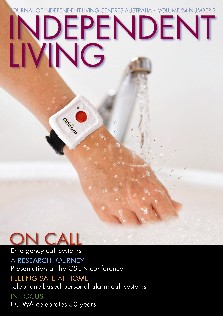
Publications
Independent LivingVolume 24 No 3
published in September 2008
Featured Articles
A Research Journey
In 2003, Yooralla ComTEC in Victoria, received grants from Philanthropic organizations to set up and run an Internet Access Fund (IAF) Equipment Pool. Itís objective is to provide people with a disability with communications hardware and software to use email applications and access the Internet.This article provides details of a study ComTEC commenced to investigate the self-reported impact of computer based assistive technology on the lived experiences of a group of people who received equipment from the IAF Pool, and their level of satisfaction with devices and the program under which these were obtained. It endeavored to evaluate the effectiveness of the program; and in doing so, uncover useful information to enable ComTEC to provide a more responsive service based on the evidence gathered.
The literature indicates that AT is often abandoned. Factors such as diagnosis, physical status, age, expectations, motivation, appropriateness of equipment, ability to trial equipment, training and instruction and assessment have been identified as influencing retention and ongoing equipment use). Studies have suggested that clinicians and services also need to better understand psychosocial factors influencing device use (Jutai 2002); and that assistive devices can promote greater quality of life if they make the user feel more competent and confident.
On Call (emergency call systems)
Personal Alarm Call Systems (PACS) are a way of calling for help if someone is alone and unable to use or reach the telephone when in distress. The systems generally work by pushing a button on a pendant worn around the neck or wrist. This activates a unit that usually connects to an existing telephone line. A call is automatically made to designated people so help can be sent to the person in distress.There are many different options and alternatives for PACS. This sheet is designed to summarise some of these options - no system is perfect! This article is not intended to replace consultation with a therapist, nor is it intended to cover all aspects of GPS trackers, and mobile phone alternatives.
Feeling Safe at Home (PACS)
Safety at home is an increasing concern for older people and those with a disability. A telephone based personal alarm call system (PACS) allows the user to call for assistance if they are unable to reach the telephone.Telephone based emergency call systems use a telephone line. There are two components - a transmitter and a receiver. The receiver is a unit connected to the telephone line and the transmitter is carried by the user or positioned in areas of high risk such as a bathroom.
Most personal alarm systems do not contact the police or ambulance directly, however the Guardian Alert system does dial 000 when activated. Most PACS use a monitoring centre or nominated individuals once the system has been alerted. The success of this is reliant on the user to be able to communicate with the emergency service.
Talking Point - two topics covered
Development of a cost-effectiveness analyses of Assistive Technology provision by Natasha Layton.A new dimension to a Continuous Accessible Path of Travel by Sue Slattery and John Evernden.
